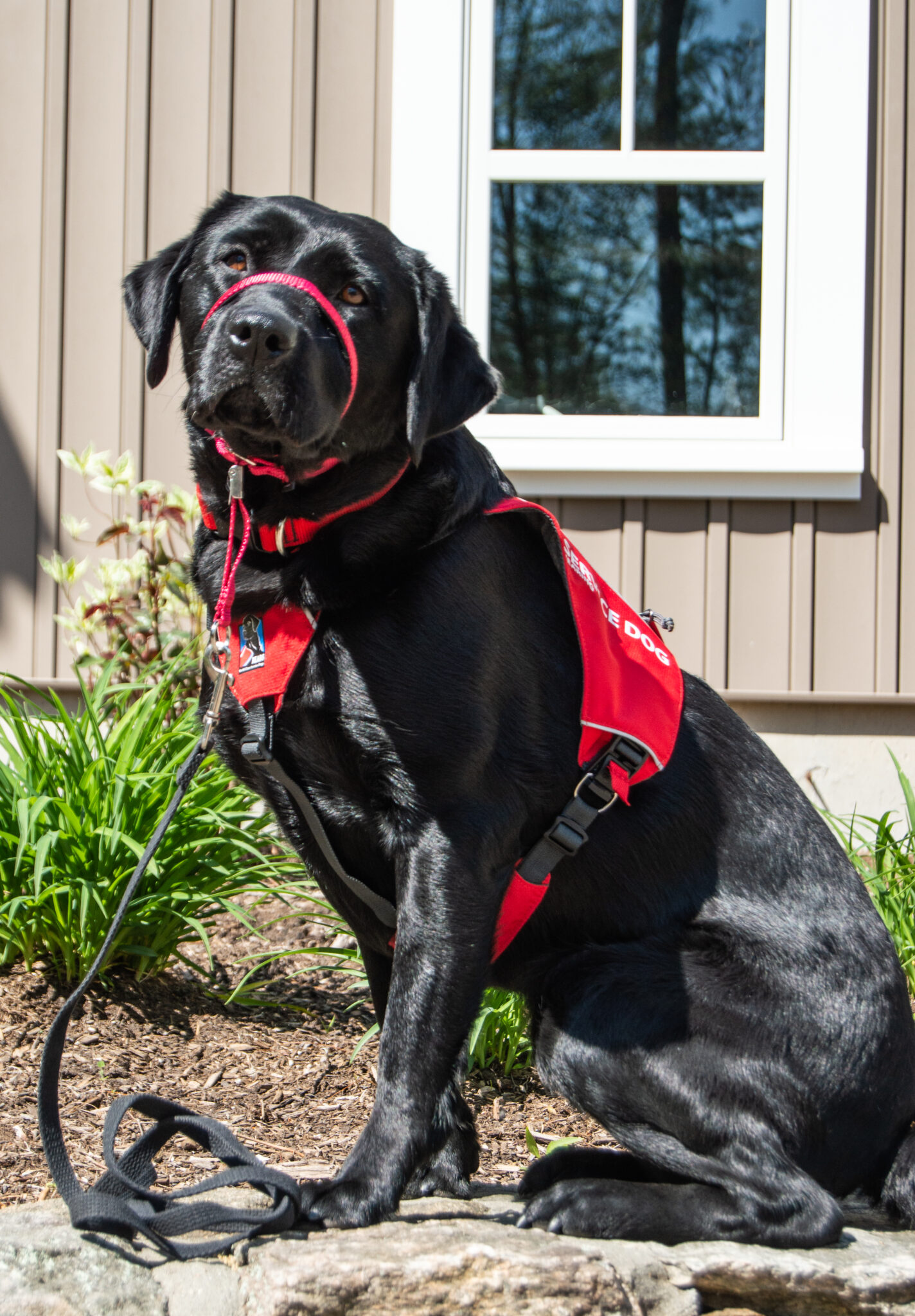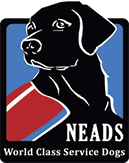Service Dogs for Children with Autism or other Developmental Disabilities

Service Dog Program for Children Ages 8 to 10
For children with autism or other developmental disabilities, a NEADS Service Dog can make all the difference. NEADS Service Dogs are trained in a variety of tasks that can address a range of symptoms, behaviors, and issues caused by a child's autism. This task work can help address a child's socialization skills, behavioral skills, life skills, and fine and gross motor skills. (Note that the task work is not designed for a child who has a major psychiatric diagnosis (including PTSD) or history of trauma.)
NEADS Service Dogs for Children with Autism are selected for their special chemistry with children. All NEADS Service Dogs are gentle, tolerant and well trained, but each has its own personality that can be matched with an appropriate child. Some children may benefit from a dog that seeks out attention and elicits play. Other children may require a quiet, somewhat reserved dog to make them feel more comfortable. The type of dog that best suits a child's needs is determined during the interview process.
Because of this highly personalized matching process, we require all applicants (child and a parent or family member) to come to our NEADS campus in Princeton, MA for an in-person evaluation and in-take interview. If you are more than 3 hours from the NEADS campus, we can begin the process with a Zoom interview.
The process to receive a NEADS Service Dog involves multiple steps. Start the process by taking our Prequalifying Questionnaire to find out if a Service Dog is right for your child.
How can a Service Dog help a child with autism or other developmental disabilities?
FAQs
One of the hallmarks of a well-trained Service Dog is that it consistently and reliably performs the tasks for which it’s been trained. For children with autism or other developmental disabilities, tasks can include:
- Visit: The Service Dog will rest its head on the child's lap. This can calm or interrupt an unwanted behavior.
- Nudge: The Service Dog can flip on a light switch, mitigating the child's fear of the dear.
- My Lap: The Service Dog will put its front two paws onto the child’s legs. The My Lap command can be given while the child is seated in a chair, or the dog can come across sideways while they are on the floor, to give the sensation of pressure. The deep pressure can help with sensory integration.
- Speak: The child can use this task to communicate with a parent. Because the Service Dog will only bark on command, the parent knows that when the dog barks, the child needs assistance.
When is a NEADS Service Dog right...
... for you and your child with autism or other developmental disabilities
For families with children with autism or other developmental disabilities, the quote from Dr. Stephen Shore rings true: “If you’ve met one person with autism, you’ve met one person with autism.”
Just as every child with autism is unique, so is every Service Dog program. To that end, NEADS asks that you consider the following before you proceed. If you decide to apply, there will be a series of pre-qualifying questions to help determine if a NEADS Service Dog may be right for you and your child.
